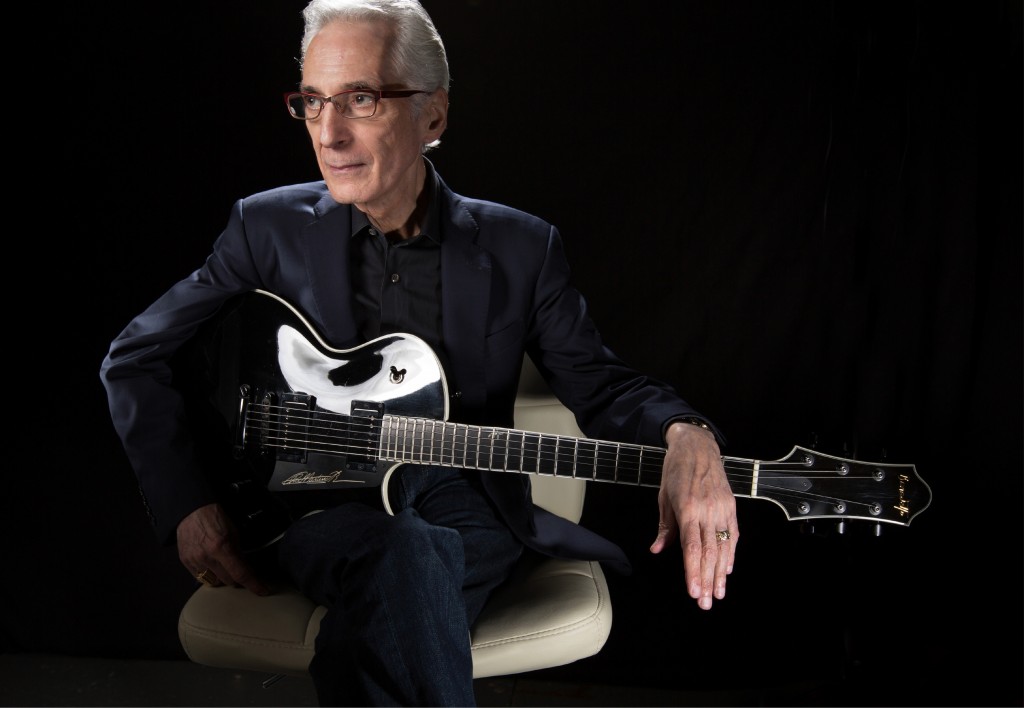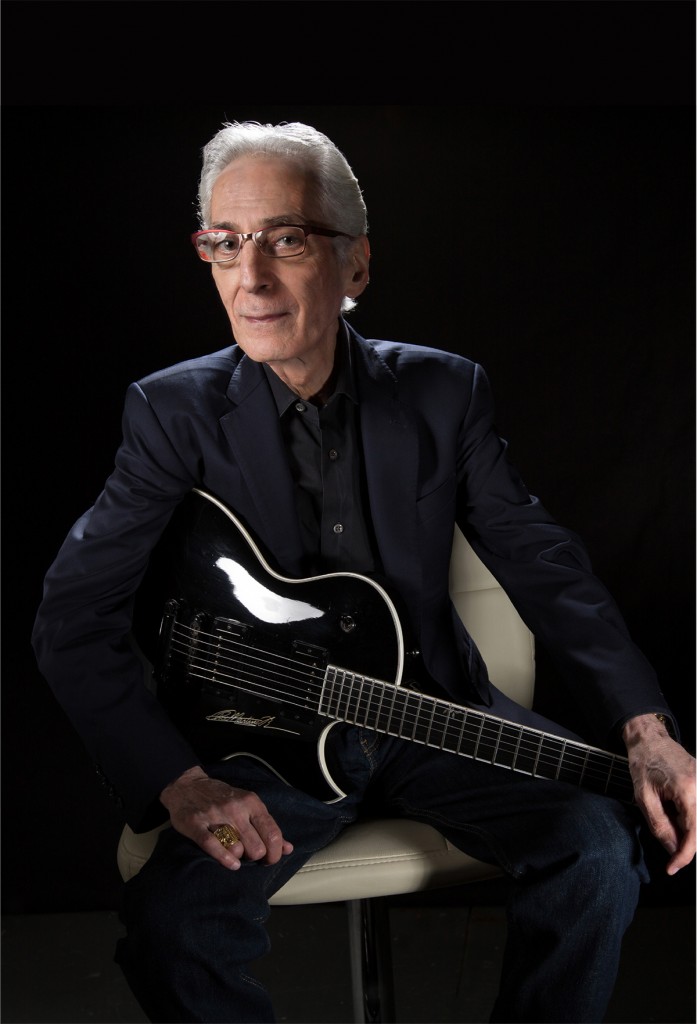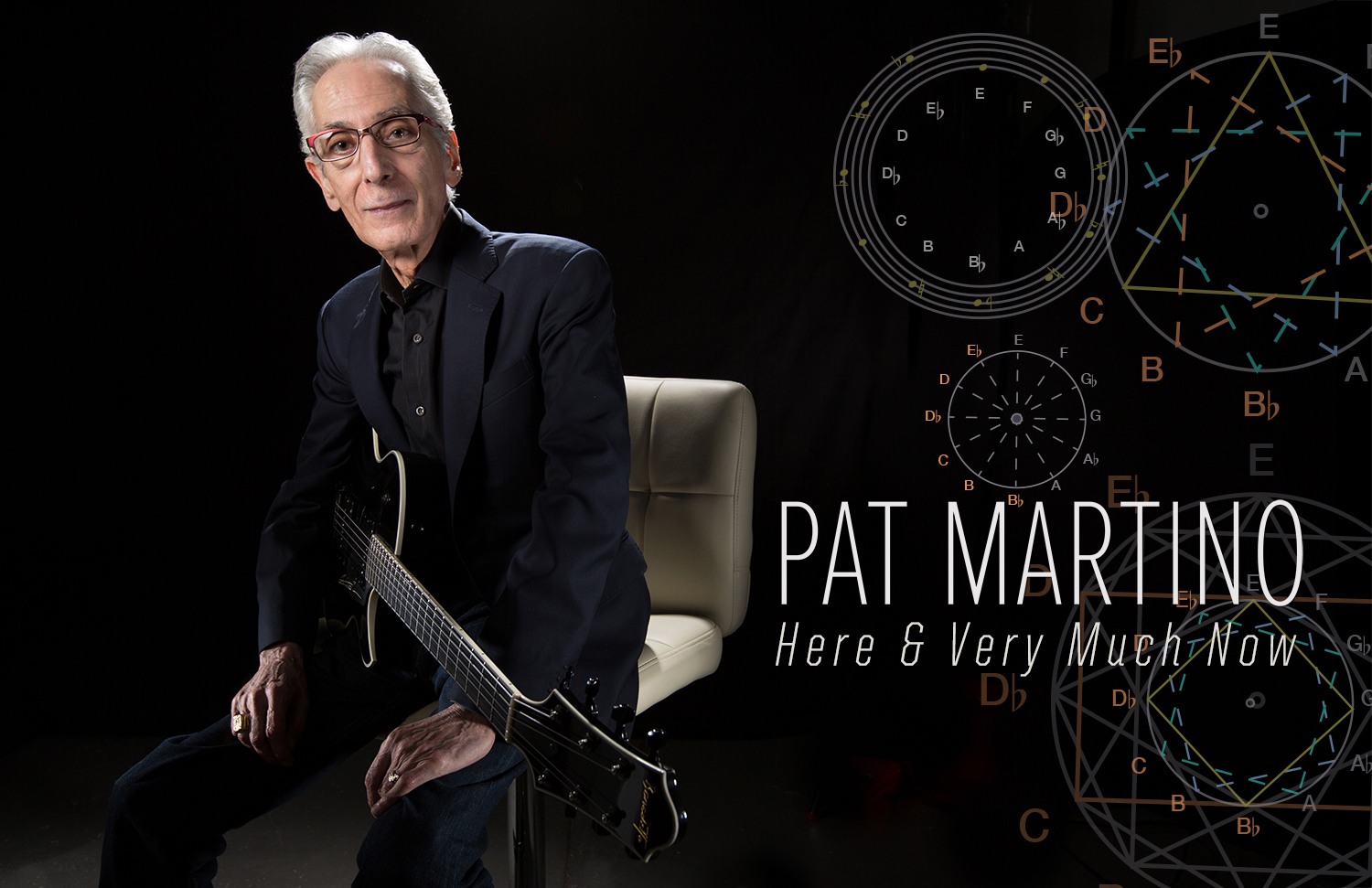Everything about Pat Martino is “extraordinary” in the fullest sense of the word. At age 15, Pat was already playing professionally on the jazz circuit. Since the early 60’s, Pat has played on over 70 albums as a sideman, featured artist or bandleader. Pat’s remarkable musicality and prowess on the guitar has been blowing minds for almost six decades now.
In 1980, at age 35, Pat had brain surgery that removed 70 percent of his left temporal lobe, resulting in severe retrograde amnesia. He didn’t know his name, he couldn’t recognize his parents, nor could he recall events prior to the operation. Pat didn’t even know he was a musician.
After the operation, Pat moved back to Philadelphia with his parents. Hoping to rekindle Pat’s love of music and the guitar, his father would play Pat’s albums. “I would lie in my bed upstairs and hear them seep through the walls and the floor, a reminder of something that I had no idea that I was supposed to be anymore, or that I ever was.”
 Whether it was the love and care of his parents, the music being played in the house, or something locked deep inside seeking daylight, Pat rediscovered music and regained his mastery of the guitar.
Whether it was the love and care of his parents, the music being played in the house, or something locked deep inside seeking daylight, Pat rediscovered music and regained his mastery of the guitar.
“As I continued to work out things on the instrument, flashes of memory and muscle memory would gradually come flooding back to me—shapes on the fingerboard, different stairways to different rooms in the house. There are secret doorways that only you know about in the house, and you go there because it’s a pleasurable thing to do. And that’s how you remember how to play; you remember the pleasure of it.”
Seven years after the surgery, in February of ’87, Pat recorded The Return live at Fat Tuesday’s in New York City and has been going strong ever since.
In a 2014 report in World Neurosurgery, neurosurgeon Marcelo Galarza wrote, “To our knowledge, this case study represents the first clinical observation of a patient who exhibited complete recovery from a profound amnesia and regained his previous virtuoso status.”
Pat’s musical legacy is well documented and widely respected — he is truly one of the most influential and accomplished musicians walking the planet today. His brain surgery and recovery process is also well documented in his autobiography, Here and Now!, and in an engrossing documentary film, Martino Unstrung. I urge you to check them both out.
When you watch the documentary and read the autobiography, you’ll also get a healthy glimpse of Pat’s perspectives on life, music and the “nature of guitar,” all of which are idiosyncratic, fascinating and inspirational.
I’ve been a fan of Pat’s for as long as I can remember (what guitarist could say otherwise?!), but I only recently watched the film, read the autobiography and had the opportunity and pleasure of working with, and spending quality time with Pat while producing his TrueFire course, The Nature of Guitar.
The opportunity to work with Pat was a dream come true for all of us here at TrueFire. We’ve always been captivated by his teachings, and the prospect of sharing his knowledge and perspective with the world was naturally very compelling. However, the more we interacted with Pat, the more ambitious the project became.
Pat’s oneness with his music reflects his oneness with life and the universe at large. Pat’s philosophies, perceptions, practices and music are all seamlessly intertwined. How do you convey that in an educational medium? How do you present and appropriately document this extraordinary life force we know and love as Pat Martino? Clearly, the biggest challenge we ever faced here at TrueFire, but also the most meaningful.

We spent two years producing the six hours of video, animations, tabs, text narratives, and musical notations that comprise The Nature of Guitar. Pat was very patient and generous with his time and contributions. Response has been overwhelmingly positive from students, and we’re very proud of the final presentation. Most importantly, Pat is thrilled with our collaboration!
“The guitar is quite a phenomenon, one that goes far beyond what it initially appears to represent. When we study something that generates ingenuity, it creates a condition that not only reveals more to us about ourselves, but in that process causes important changes in our viewpoints.
That’s what these studies are about. They’re designed to provide a greater insight regarding specific traits of the instrument itself, but at the same time joining with similarities found in many other things. In this way continuously producing what’s needed to expand our perspectives. That’s ‘The Nature of Guitar.’”
Over the course of The Nature of Guitar, Pat inspired all of us in many wonderful ways. We’ve learned so many things that seemingly have little to do with music, but when you look deeper, they have everything to do with music and the “here and now.” Thank you, Pat.
![]()
IN HIS OWN WORDS
What is it about the guitar that attracted you to it originally, and still fascinates you today?
That’s a difficult question, because there are so many things about it that are significant. One of its strongest qualities is how intimate it can be, and I think there’s something attractive about that for the kids.
Children love toys, and each of them have a lifespan. Some last longer than others, but the moment they’ve been captured and absorbed, interest begins to fade. Of all of the toys that captured my attention, the guitar has had the longest lifespan, in fact it’s just as attractive now, as it was in the beginning. It’s timeless, and that’s what continues to fascinate me.
Your idea of happiness?
Happiness is one half of a condition that provides insight. In general, all things can be viewed through a comparison with their opposites, (man / woman, good / bad, ascent / descent, major / minor, etc.)
When your question is viewed within those conditions it produces a different result (than if it were to be viewed singularly). Accordingly, when the day is joined with night, a complete 24 hours is evaluated in unity as one.
Throughout my experience, happiness and sadness have been guided by that same phenomenon. It seems that one projects the other, and neither are continuous, unless seen as one. To selectively view it from a conscious distance produces a state that’s often referred to as objectivity, or “the third eye,” no longer controlled by polarity.
Name three things a player can do to improve their musicianship.
Trained “musicianship” is a craft, and as such it remains separately outside of ones innate blessings. One should certainly consider the following:
Purpose: What music has been chosen to be used for.
Focus: The level of clarity and distinctness on the projection of one’s ideas.
Continuity: An uninterrupted connection, or union with one’s commitments.
If not yourself, who would you be?
Exactly what “I Am” in another vehicle.
Given the changing business landscape of the music business and how tough it is to sell records etc — what are the positives about the current evolution of the music business?
To begin with, “the music business” itself is more of a responsibility for management, booking, accountants, etc, not for the artist.
One of the most positive facets of our current state is the condition of the recording process. For us to be fully equipped with what’s needed to achieve an extremely high level of the art through systems that are miniature in size, as well as cost is profound. When compared to the past, communication has expanded, allowing us the availability of music programs, lead sheets, transcriptions, live performance examples, recordings, contact information, etc, at a very low cost. When coupled with social interaction, our experience, (and its outcome) is much higher than ever before.
Your favorite motto?
“True music, like all true Art is an experience to be shared not judged, for praise cannot make it better, as blame cannot make it worse” – From “We’ll Be Together Again” 1976.

What do you dream about? Literally.
To be honest with you, I dream very little, but when I do it’s normally the opposite of what was experienced in real time. It’s interesting how psychologist Carl Jung believed that even our most fanciful dreams are methods of compensation for events that occur in our waking lives.
What are your aspirations?
Your favorite heroes in fiction?
Definitions are different for each of us, and as far as works that are based upon our imagination, (as well as fiction) to me the Bible, the I Ching, the Koran, and others contain the greatest heroes of them all.
 What or who is the greatest love of your life?
What or who is the greatest love of your life?
Love itself.
Your favorite food and drink?
Although I prefer a vegetarian diet, conditions change due to international travel. Under such, my concern is high quality, and the easiest form of adaptation. Sometimes that’s mainly fruit, and pure water.
In your next life, what or who would you like to come back as and why?
The terms “like, or dislike” have very little to do with one’s commitment to purpose. As to what, or who, as what I AM. Why?, ….. to embrace Love itself.
The natural talent you’d like to be gifted with (other than music)?
Mathematics and Imagination
In life or in music, what is the one central key learning that you’d like to pass on to others?
The profound nature of “NOW”


